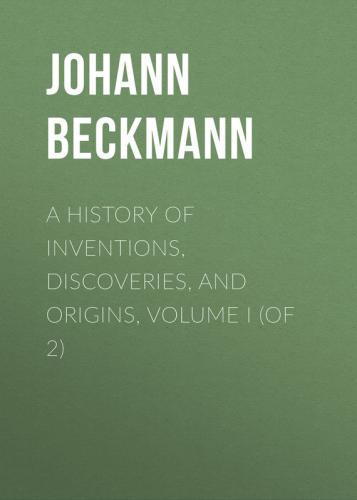183
Ungrisches Magaz. Pressburg, 1781, vol. i. p. 15.
184
Stephanus Broderithus says, speaking of the year 1526, “When the archbishop received certain intelligence that the Turks had entered Hungary, not contented with informing the king by letter of this event, he speedily got into one of those light carriages, which, from the name of the place, we call
185
In his Account of the German War, p. 612.
186
Examples may be seen in Frisch’s German Dictionary, where it appears that the beds which are used for raising tobacco plants are at present called
187
Roubo, p. 457. The historian, however, gives it no name.
188
“
189
Nicolai Beschreibung von Berlin, Anhang, p. 67.
190
At Rome, however, at a very early period, there appears to have been carriages to be let out for hire: Suetonius calls them (i. chap. 57)
191
Charles Villerme paid in 1650, into the king’s treasury, for the exclusive privilege of keeping coaches for hire within the city of Paris, 15,000 livres.
192
A full history of the Parisian
193
An account of the manner in which these
194
Anderson’s Hist. of Commerce.
195
Haubers Beschr. von Copenhagen, p. 173.
196
Twiss’s Travels through Spain and Portugal.
197
[Sextus Empiricus (Adv. Math. cap. 21) says that the Chaldæans divided the zodiac into 12 equal parts, as they supposed, by allowing water to run out of a small orifice during the whole revolution of a star, and dividing the fluid into 12 equal parts, the time answering to each part being taken for that of the passage of a sign over the horizon.]
198
Lib. ix. c. 9.
199
[Some mode of measuring time by the reflux of water, however rude it might be, was used at Athens before the time of Ctesibius, as we see by various passages in Demosthenes.]
200
Auctor Dialog. de Caus. Cor. Eloq. 38. – The orators were confined to a certain time; and hence Cicero says,
201
Some account of the writers who have spoken of the water-clocks of the ancients may be found in Fabricii Bibliograph. Antiquaria, p. 1011. They were formerly used for astronomical observations. The authors who treat of them in this respect are mentioned in Riccioli Almagest. Novo, i. p. 117.
202
In that year Kircher’s Ars Umbræ et Lucis was published for the first time. In the edition of 1671, several kinds of water-clocks are described, p. 698.
203
A particular account of these water-clocks is to be found in Ozanam, Recréations Math. et Physiques [republished in Hutton’s Mathematical Recreations, ii. 40]. Bion on Mathematical Instruments.
204
Muschenbroek, Philos. Natur. i. p. 143.
205
Journal des Sçavans, 1691.
206
This monk may be considered as the restorer of the clepsydra, or clock which measures time by the fall of a certain quantity of water confined in a cylindric vessel. These clocks were in use among ancient nations. They are said to have been invented at the time when the Ptolemies reigned in Egypt. Dom Vailly, who applied himself particularly to practical mathematics, having remarked the faults of these clocks, bestowed much labour in order to bring them to perfection; and by a number of experiments, combinations, and calculations, he was at length able to carry them to that which they have attained at present. At the time of their arrival they were very much in vogue in France. – Hist. Littéraire de la Congr. de St. Maur, ordre de S. Bénoit. Bruxelles, 1770, 4to, p. 478.
207
Ozanam, ii. p. 475.
208
Alexander will not admit this to be the case. “It is possible,” says he, “that two persons of penetrating genius may have discovered the same thing.”
209
Art du potier d’étain, par Salmon. Paris, 1788, fol. p. 131.
210
Theophrast. De Lapidibus, edit. Heinsii, fol. p. 395, and Plin. lib. xxxvii. c. 3, and lib. viii. c. 38.
211
Epiphanius De XII Gemmis.
212
J. de Laet De Gemmis. 1647, 8vo, p. 155.
213
Phil. Trans. vol. li. 1. p. 394.
214
Recueil de Mem. sur la Tourmaline, par Æpinus. Petersb. 1762, 8vo, p. 122.
215
Gemm. et Lapidum Historia. 1647, 8vo, p. 441, 450.
216
Plin. lib. xxxvii. c. 7.
217
India produces also the lychnites, the splendour of which is heightened when seen by the light of lamps; and on this account it has been so called by the Greeks. It is of two colours; either a bright purple, or a clear red, and if pure is thoroughly transparent. When heated by the rays of the sun, or by friction, it attracts chaff and shavings of paper. It obstinately resists the art of the engraver. – Solinus, c. lii. p. 59. Traj. 1689, fol.
218
“Hager albuzedi is a red stone, but less so than the hyacinth, the redness of which is more agreeable to the eye, as
